The ability to lead through clear, persuasive communications is more important than ever. Too often, however, presentation skills training focuses on just that — skills. But a coaching approach builds capabilities.
How many slides are enough, but not too much?
How should they design the slides?
What should they wear to an important presentation?
Should they use notes?
Where do they put their hands?
Do they talk too fast?
Do they use too many vocal crutches like “um” and “uh”?
New clients tend to focus these kinds of questions. They are anxious about their body language and their voice, often because they’ve heard about the misquoted study that led to the so-called “55-38-7 rule.” How do body language rules apply on Zoom?
They obsess about their slides, avoiding animations, builds or creative transitions, because it was too distracting. But in an era of virtual meetings, these tools may be desirable to keep visual interest on the screen.
Most presentation training doesn’t work.
I have sat through more presentations as a trainer than I care to count. I have taken careful notes and provided feedback on these skills. My clients take the counsel with interest. But I am willing to bet that, after the (often) single session with me, they quickly return to their old habits when faced with real world presentation dynamics.
The one-and-done model of a single session — even a four-hour marathon — is barely enough to make any long-lasting difference in a presenter’s effectiveness.
They might pick up a technique, or recognize an area for an incremental improvement. But they won’t suddenly become inspirational orators.
What does work is a series of shorter sessions, each focused on a particular topic specific to the person I’m working with. For example, I can work with a client for an entire hour-long session developing a dossier on their audience, showing them how to employ empathy and understand intrinsic and extrinsic motivators. We can use another session to map out the narrative structure, coaxing the elements that will make the presentation more impactful and authentic.
Then there’s the practice. Lots and lots of practice. Not just so I can pick apart the delivery — although that is part of it — but to see if what they say is coherent, cohesive and, most important, corresponding with their delivery, and relevant to what we know about the audience and the situation.
Throughout the process, a deeper learning takes place.
Skills are part of it, but not all of it.
Skills change. Capabilities endure.
A report by Deloitte suggests that the rapidly changing work environment, marketplace, and technological landscape makes skills training, at the exclusion of all else, a losing strategy. Companies must develop their people’s capabilities to discern needs and adjust accordingly.
“Innate capabilities like curiosity, imagination, creativity, empathy and resilience…can be amplified, while other capabilities, such as social and emotional intelligence, sense-making and adaptive thinking, can be developed.”
Deloitte, “Skills Change, But Capabilities Endure”
The same goes for communications. In fact, all these capabilities — both innate and developed — directly influence how effective a communicator you are.
Humanizing communications coaching.
It was bound to happen sooner or later. Machines are chipping away at traditional presentation skills training.
Microsoft announced this week a new PowerPoint feature called “Presenter Coach,” which provides feedback on body language, tone of voice, verbal fillers, pace, pitch, and other skills.

These are within the traditional wheelhouse items for one-size-fits-all skills presentation training.
It is a new world.
Unfortunately, it may be a new world where machines teach presenters to present like…machines.
Communications Coaching in Context
The new communications coach is just that — someone who helps a client draw out their own best narrative for the highest impact. While software can help identify the areas of improvement for technical skills of delivery, a human coach works within the context under which the communications takes place.
A communication coach helps you understand and work past your nervousness about presenting.
A coach works with you to develop your own authentic voice as a leader.
Coaching helps prepare you for tough questions and difficult conversations.
Communications coaching draws out and amplifies capabilities to help people become more effective leaders in this rapidly changing, unpredictable world.
This is the next wave of communications development — not training presentation skills, but coaching communications capabilities.
Photo by Vidar Nordli-Mathisen on Unsplash

